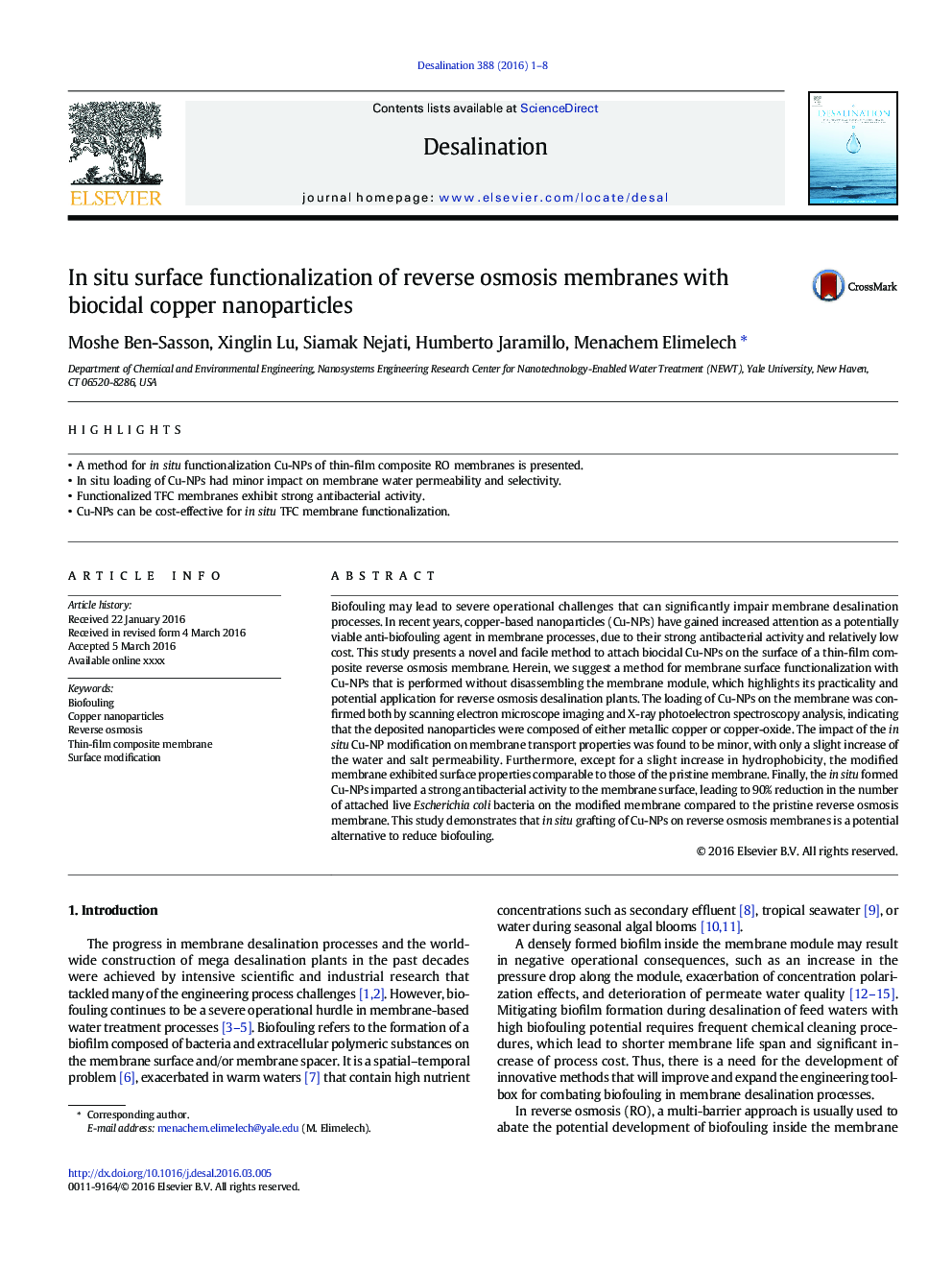| Article ID | Journal | Published Year | Pages | File Type |
|---|---|---|---|---|
| 622793 | Desalination | 2016 | 8 Pages |
Abstract
Biofouling may lead to severe operational challenges that can significantly impair membrane desalination processes. In recent years, copper-based nanoparticles (Cu-NPs) have gained increased attention as a potentially viable anti-biofouling agent in membrane processes, due to their strong antibacterial activity and relatively low cost. This study presents a novel and facile method to attach biocidal Cu-NPs on the surface of a thin-film composite reverse osmosis membrane. Herein, we suggest a method for membrane surface functionalization with Cu-NPs that is performed without disassembling the membrane module, which highlights its practicality and potential application for reverse osmosis desalination plants. The loading of Cu-NPs on the membrane was confirmed both by scanning electron microscope imaging and X-ray photoelectron spectroscopy analysis, indicating that the deposited nanoparticles were composed of either metallic copper or copper-oxide. The impact of the in situ Cu-NP modification on membrane transport properties was found to be minor, with only a slight increase of the water and salt permeability. Furthermore, except for a slight increase in hydrophobicity, the modified membrane exhibited surface properties comparable to those of the pristine membrane. Finally, the in situ formed Cu-NPs imparted a strong antibacterial activity to the membrane surface, leading to 90% reduction in the number of attached live Escherichia coli bacteria on the modified membrane compared to the pristine reverse osmosis membrane. This study demonstrates that in situ grafting of Cu-NPs on reverse osmosis membranes is a potential alternative to reduce biofouling.
Keywords
Related Topics
Physical Sciences and Engineering
Chemical Engineering
Filtration and Separation
Authors
Moshe Ben-Sasson, Xinglin Lu, Siamak Nejati, Humberto Jaramillo, Menachem Elimelech,
